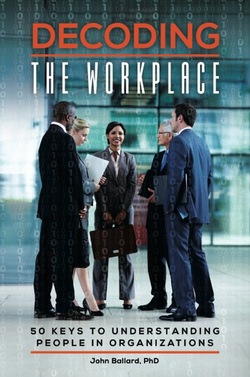
The origins of the book were graduate students who were working professionals. They thought the stories and concepts we discussed in classes should have a broader audience, that there were those who would benefit who would never be in our classes. So I began. I was into the writing process when changes arose in my academic department. As a result of these changes in direction, the department needed me to refocus on my academic research and writing more for peer-reviewed journals. That’s what our academic department needed most. I agreed and put the book on the shelf. That was 2003.
In 2011 I returned to the book and rewrote and moved forward. In the summer of 2012 I attended the Antioch Writers’ Workshop in Yellow Springs, Ohio. That opened my eyes to how little I knew about the business of books. That fall my university awarded me a sabbatical to complete the book. In December the first of 15 drafts was complete.
In 2013 I used my spare time to produce a 50-page book proposal and research, rank order 50 agents with whom I might like to work. It took eight months. It then took another month to craft a three-paragraph email to query prospective agents. I emailed my top three choices. One asked to see the proposal, then suggested improvements in the proposal. In January of 2014 I resubmitted the revised proposal. Maryann Karinch of the Rudy Agency asked to represent me. In the fall of 2014 we sold the book to Praeger, an imprint of ABC-CLIO. I worked with my Praeger editor Hilary Claggett to prepare the manuscript. Working with Hilary, other Praeger employees, and a few to whom work was outsourced, we completed the process of producing the finished book.
My take-aways:
1. No matter the task, no matter the project, there is always more to learn. Even at this point in the process, everyday I am learning something new about the book business.
2. Research is critical and a deciding factor. I researched the literary agents I ranked. I studied the kinds of books and authors they represented. I looked for factors that suggested we could relate to each other, work productively with each other. The result: I emailed only three queries to literary agents. How much work do you put into researching new clients, your best customers? How much do you know about the peer with whom you need help to accomplish a project? Research, good research, yields knowledge. Knowledge improves decision-making and reduces risks.
3. Building new productive relationships is essential to success. Much of my involvement in the book business has been forging new relationships, mostly by email. It does take a village. Different personalities, different work habits, different motivations, different places in life. I enjoy getting to know others. I consider that a blessing. The quality of new relationships can affect the eventual outcome. Quality relationships, whether in business or personal life, involve work, openness, reflection, and above all, listening. At the heart of human interaction is the communication of meaning.
4. Your network can greatly affect outcomes. Who do you know that can help you? How often do you cultivate old friendships? Who knows someone who can help you? The research features of LinkedIn have facilitated this process. People in your network can open doors, create opportunities. Again and again in moving Decoding the Workplace forward, I have benefited by the generosity of people in my network, a network built across a lifetime.
5. Reach for the stars. Dream big. Set goals. This book was a goal – specific, measurable, and somewhat difficult. It was not an impossible dream. It took long hours, much work, and an understanding, loving partner, God bless her.
Don’t be afraid to pursue your dreams. Learn, research, build relationships, let your network help, and continue to reach for the stars.
Cover of Decoding the Workplace used with permission of Praeger.
___________________________________
Follow me on Facebook at https://www.facebook.com/johnballardphd
On Twitter: @johnballardphd
Decoding the Workplace: 50 Keys to Understanding People in Organizations
Here is the Google preview.
Available for at leading on-line bookstores such as Amazon.com
 RSS Feed
RSS Feed